The one time I went to Maine, with my mom, it was July. But on the two-page wordless spread that both begins and ends Blueberries for Sal, the wall calendar tells us it is August. Mom loved this picture book by Robert McCloskey, and she made sure I did too.
It was an easy sell. A mother and her daughter go out to pick blueberries before winter, while a mother bear and her cub go out to eat blueberries before winter. The pairs get mixed up — Mother with Little Bear, and Mother Bear with Little Sal — but all ends well. Each of our four characters gets more than enough blueberries, either in their tummies or in their pail. Winter will be sweet.
But despite the story’s happy ending (which is something my mother valued very much), there’s a lot about this story that does not match the vision I have of what she liked.
Wouldn’t my mom want Little Sal to be wearing a dress rather than overalls that keep sliding off the shoulder? Wouldn’t she prefer for Little Sal to have a more girlish ‘do? Wouldn’t she worry about presenting bears in too friendly a light? Wouldn’t she fret that the book sends a bad message, that it’s okay for a child to get lost and fritter away a day with only three lousy berries to show for it?
Apparently not.
The words I remembered best from this story were the three that describe the sound the blueberries make when they plop into Little Sal’s pail: “kuplink, kuplank, kuplunk!” When she drops a blueberry in her mother’s pail, it does not make that sound because there are already so many blueberries. The sound later startles Mother Bear because her child does not make a noise like kuplunk!
The other part I remembered was what happens when Little Bear eats from Mother’s blueberry pail: “Of course, he only wanted to taste a few of what was inside, but there were so many and they were so close together, that he tasted a Tremendous Mouthful by mistake.” McCloskey must like the phrase because he writes it twice: “Little Bear tasted another Tremendous Mouthful, and almost spilled the entire pail of blueberries!”
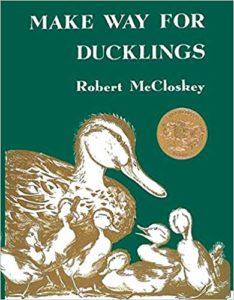
But these four characters, they’re like the cast of Seinfeld, famous for the show’s credo, “No hugging, no learning.” Little Sal doesn’t learn her lesson. Presumably, Little Bear doesn’t either. Do the two mothers promise to be more careful, to not let such a potentially dangerous mix-up happen again? Nope. The bears go home “down one side of Blueberry Hill” and the humans go “down the other side of Blueberry Hill.” There’s no hugging, no learning, only eating and picking and (in the last picture) canning.
All of which is fine and dandy with me. But was my mother happy with such ambiguity? I suppose so.
The first illustration shows Mother’s car parked on Blueberry Hill, near a grove of pine trees, above a classic Maine townscape. Little Sal and Mother look right at us, the readers. Little Sal seems proud. She is going with her mother to do important work — just look at the pail she so confidently swings!
Mother looks at us too, one hand holding her pail, the other holding Little Sal’s hand. Her sideways glance and slight smile communicate understanding far beyond what she’s willing to say on the page. There is more to her than we will ever know.
She looks so young.
For You
1. Pick a book from your childhood and reread it. What surprises you?
2. What books did your parent or guardian love? What does it tell you about them?
3. Read a Caldecott-winner and try to figure out why the illustrations were medal-worthy.
_______________
The next Children’s Book Club will meet Friday, August 9. We will read Oh My Oh My Oh Dinosaurs! by Sandra Boynton. (Available in board book form, for that special toddler in your life.)
Photo by Ian D. Keating, Creative Commons, via Flickr. Post by Megan Willome.
Browse more Children’s Book Club
“Megan Willome has captured the essence of crow in this delightful children’s collection. Not only do the poems introduce the reader to the unusual habits and nature of this bird, but also different forms of poetry as well.”
—Michelle Ortega, poet and children’s speech pathologist
- Perspective: The Two, The Only: Calvin and Hobbes - December 16, 2022
- Children’s Book Club: A Very Haunted Christmas - December 9, 2022
- By Heart: ‘The night is darkening round me’ by Emily Brontë - December 2, 2022
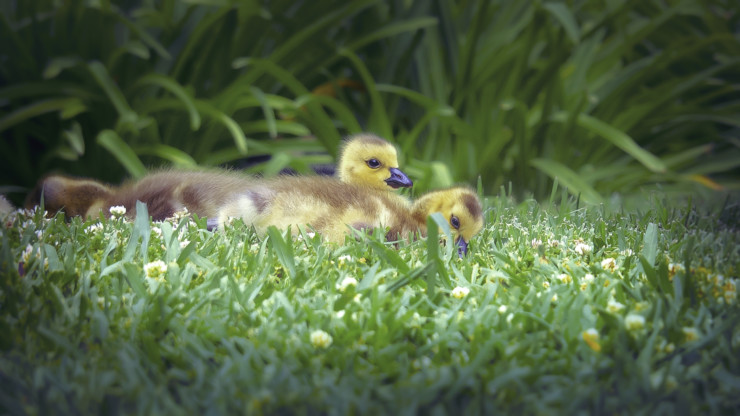
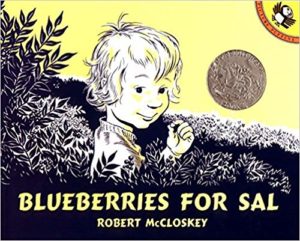
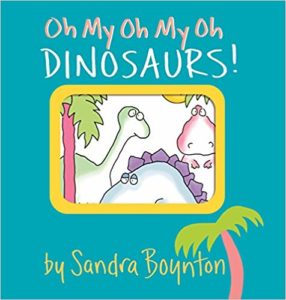
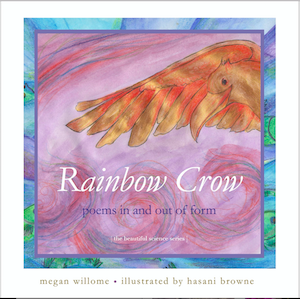
Glynn says
Both McCloskey books have been favorites for reading to our grandsons — their favorites. (They also like “Going on a Bear Hunt,” but whenever we reached the repetition of “We’re not scared,” the middle grandson would say, “Yes, we are!”).
Megan Willome says
That is too cute!
There is something special about parents and grandparents passing down books through the generations. Both this one and “Make Way for Ducklings” still work well, despite being published so long ago.
Katie says
So enjoyed sharing these books with my children years ago and looking forward to reading them with my grands. Thank you, Megan for your thoughtful post🙂
Megan Willome says
Katie, isn’t it amazing how these books endure?
Katie says
And I’m so glad they do endure so they can be shared and passed down generation to generation:)
L.L. Barkat says
I really liked this: “There is more to her than we will ever know.”
And, that ending—”She looks so young”—was quietly arresting.
Overall, I just love the way you describe the book. I don’t remember ever reading this one with my kids. (Maybe I should, soon. 🙂 Even if they are 19 and 22. )
Megan Willome says
Maybe you check it out first?
Thanks for your thoughts on the piece itself. Those were the lines that surprised me as I wrote about this book I’ve had on my shelf for who knows how long.
LW Willingham says
The first time I read a book that had no learning (I don’t know about hugging) I was an adult, I think. Which is to say, probably I read books that did not have a specific lesson to teach, moral or otherwise, but I’m not sure I read them that way. I have many a fiction book in which I’ve written marginalia because it felt instructive to me. But one day, when I was very far into being a grownup, I read a book and just enjoyed it. No learning, no hugging. It felt a bit revolutionary. 🙂
This sounds like such a delightful book. (And I’m glad no children were eaten.)
Megan Willome says
LW, it is a different way to read and also a different way to write.
One thing I like about the book is that both Mother and Mother Bear are frightened by the mixup of their children. Their immediate concern is for their own child, so there’s a slow backing away, along with this parallel acknowledgment: “(She was old enough to be shy of bears, even very small bears like Little Bear.)” and “(She was old enough to be shy of people, even a very small person like Little Sal.)”
Katie says
Megan,
I just listened to Sarah MacKenzie’s Read Aloud Revival podcast this week. She interviewed the author Amanda Dykes. What fun listening to them share children’s books set in Maine:)
I love this quote from the program:
“Where can you find such high density voice, tone, whimsy, magic, just the absolute heartbeat of a place. . .other than children’s books?” Amanda Dykes
Megan Willome says
Katie, I don’t know that author, but now I’ll check her out.
I really love books that have a strong sense of place, where setting is character.